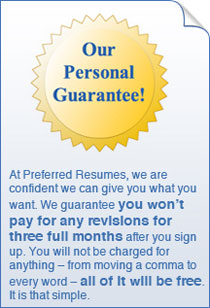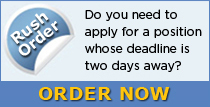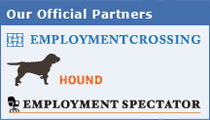How to Create a Resume
By Sayaka Seino
|
|
There are many types of resumes, but a good one to start with is the chronological resume because it is the most utilized, easiest to read, and easiest to create. Here we will outline the main segments of the chronological resume and what is required of each.
Personal and Contact Information
Your personal and contact information will always be at the very top of your resume. Be sure to include your full name; titles and suffixes like Dr. or Jr. are appropriate if desired. Underneath your name include your current, active contact information in this order: mailing address, city, state, telephone number, and email address.
Profile or Statement of Qualifications
The profile statement, if you choose to include one, can be an extremely important element of your resume as most employers will read the space under your contact information first. This is a fairly new element that has become an increasingly popular way to point your potential employer immediately to the skills and qualifications you most want to show off. The best time to use a profile statement is when you are looking to work in a different field and you want your transferable skills to outshine your work experience. This section should be clear and concise and not any more than four lines.
Objective
The objective section is the traditional place to clearly state your reason for application and your goals with the company. Be straightforward and concise; this will often be the first impression you give your potential boss. You may choose to forego this section if you decide to include a profile statement.
Education
Always include education information in your resume. This should be in chronological order starting with the most recent institution at which you were schooled. Be sure to include the name of the school, city, state, degrees earned, and in what year you received those degrees. You may also choose to include any activities or coursework that relates to the field you are entering. Listing honors, awards, and scholarships may also be considered if applicable. If you had a strong class ranking, it may be a good idea to include your GPA.
Where this section is located on your resume may depend on a few things. If your last degree was earned more than three years ago or your work experience has more weight than your education, this section should go after your work history. If your last degree was earned recently you will want to have this section before your work history as you probably don't have a lot of work experience yet.
Work Experience
It is always a good idea to list your work experience, especially those jobs relevant or similar to the job for which you are applying. Again, this should be in chronological order starting with your most recent place of employment. Be sure to include the company name, city, state, and dates of employment. If you are still with a company, for the dates of employment put the year you started employment followed by a hyphen and the word ''present.'' You may also choose to outline some of the tasks or responsibilities you had in previous jobs if they highlight skills that will be useful in your new desired job.
Community Involvement or Volunteer Experience
Although it is optional to include your volunteer and service experience, if you have any it's a good idea to include it. It says something about your character and most bosses see it as a sign of good work ethic and self-motivation.
These are the main elements you will want to include in your professional resume. Remember to keep it concise, keeping only the most relevant information. You may even want to do some research on the company you're applying for so you know which specific skills to highlight on your resume. If you plan carefully and tailor each section to the needs of your potential employer, you are likely to get noticed and receive a call back.




